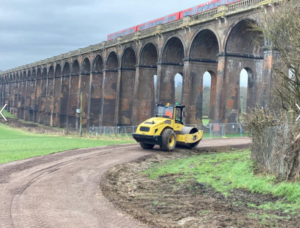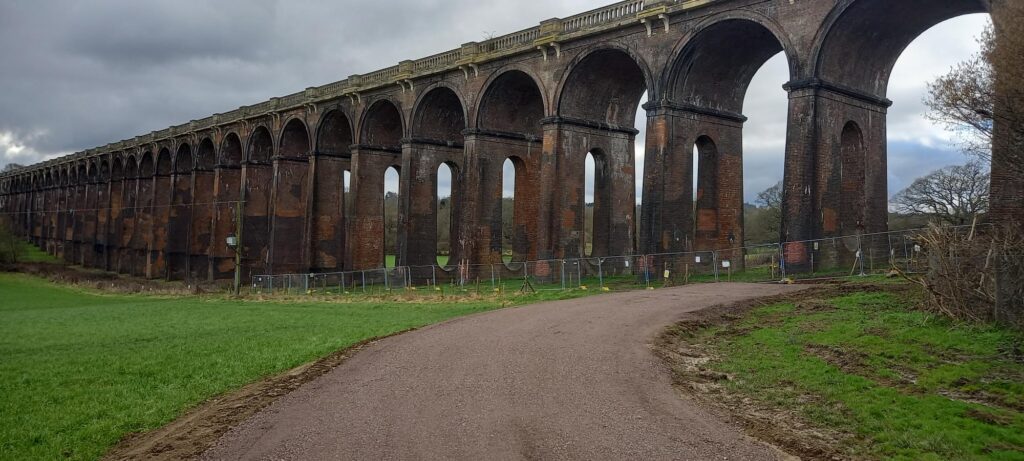Our Rail Service teams have successfully completed a year long project restoring defective stonework and bricks on 8 arches across Ouse Valley Viaduct, near Haywards heath.
Built in 1841, this 450-metre-long structure, often hailed as “the most elegant viaduct in Britain,” had deteriorated over time. Our work focused on replacing 2,600 bricks and 40 tonnes of stone repairs across the 180-year old viaduct to address defective areas. This essential maintenance not only enhances the structure’s integrity but also ensures the safety of public footpaths below, preventing stones from falling. These ongoing repairs are part Network Rail’s wider long-term programme of work to repair and restore the viaduct with a range of other future work planned. These repairs will enhance the overall life of this structure for many more years.
With 17 million passengers passing across the ” the most elegant viaduct in Britain.” every year we worked closely with our customer, conservation team and English heritage to ensure the work was carried out sympathetically and keeping in line with the aesthetics of the structure. The stone is Richmont Crème – a French limestone which originates from a quarry 8km north of Poitier in western France, it was then shipped to Chichester where the 10-tonne pieces limestone blocks were carefully broken and shaped to fit the viaduct’s intricate design by specialist stonemasons.
Given the challenging environment, including the weight of materials and the viaduct’s height, our team developed several innovative solutions. Traditional lifting methods proved unsuitable for the heavy stones, so we utilised ‘Lewis pins’—a tool commonly used for stonework, it securely anchors into stones for stable lifting. After rigorous testing, these pins allowed us to safely hoist stones weighing up to 480kg to the viaduct’s summit.
Furthermore, preserving the surrounding landscape and keeping the safety of our workforce a priority. Our team thought differently to ensure access was suitable to the environment, therefore, instead of using traditional track mats that could damage local fields, we implemented a soil stabilisation solution by Soil Science. This innovative method enabled the creation of a temporary haul road that could be ploughed back into the soil post-completion, leaving the environment undisturbed.
priority. Our team thought differently to ensure access was suitable to the environment, therefore, instead of using traditional track mats that could damage local fields, we implemented a soil stabilisation solution by Soil Science. This innovative method enabled the creation of a temporary haul road that could be ploughed back into the soil post-completion, leaving the environment undisturbed.
A huge thank you to everyone involved for delivering innovative solutions, protecting the environment, and preserving a key piece of Britain’s railway heritage.


